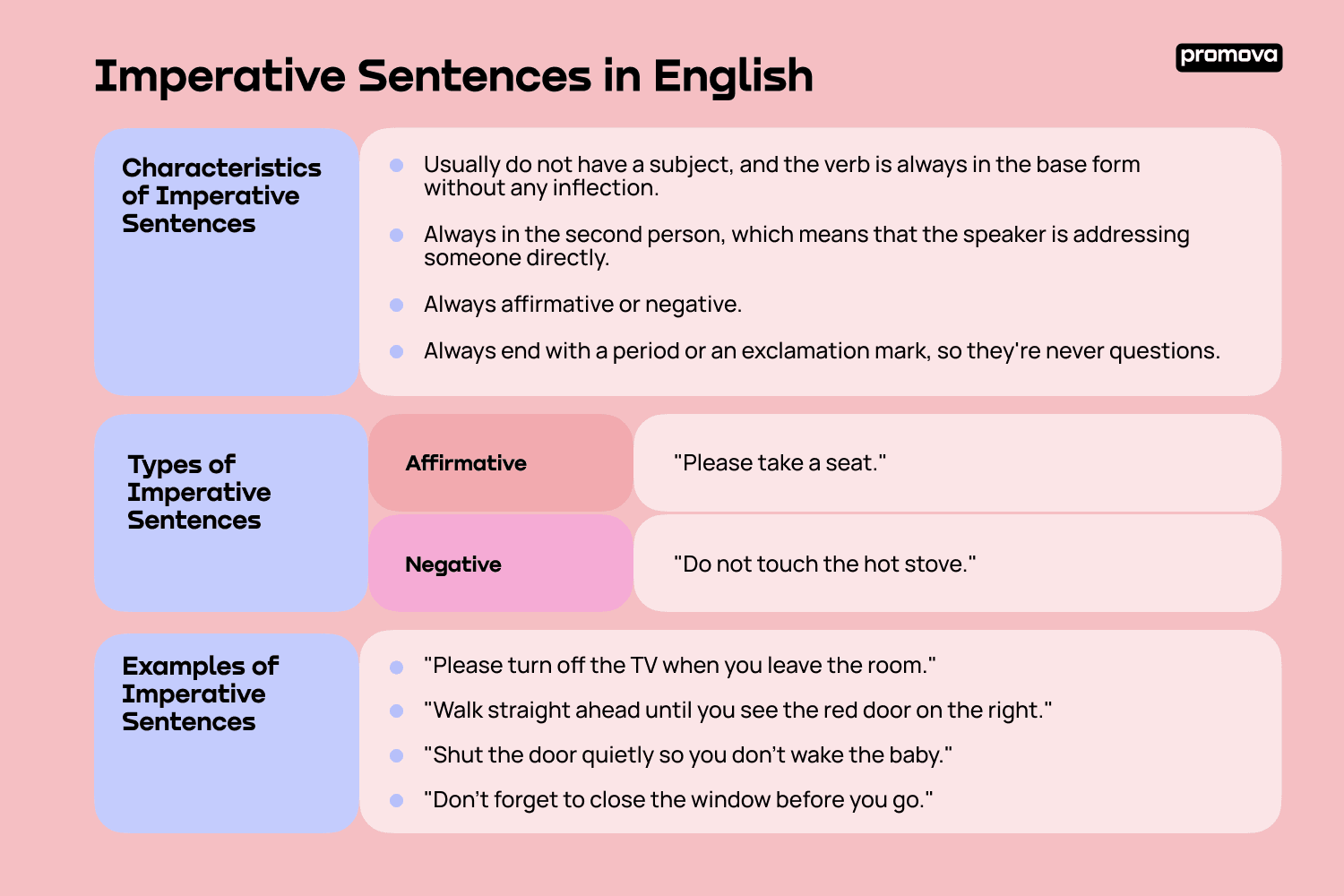Imperative Sentences in English
Contents
If you have ever received a command or a request, then you must have come across imperative sentences. Imperative sentences are one of the four types of sentences in English, alongside declarative, interrogative, and exclamatory sentences.
In this reference, we will look at imperative sentences, their meaning and characteristics, types, examples, common mistakes, and how to use them correctly.
What is an Imperative Sentence?
An imperative sentence is a kind of sentence that is used to give an order or command. They are often used to instruct someone to do something or to ask someone to do something. Imperative sentences can be either positive or negative, and they usually do not have a subject. Imperative sentences are also sometimes referred to as a command sentence, and they always end with a period or an exclamation mark.

Understanding the meaning of imperative sentences
The primary purpose of imperative sentences is to give commands or instructions. They are used to tell someone to do something or not to do something. Imperative sentences are often used in everyday communication, such as in the workplace, at home, or in school. They are a way of expressing your desires or needs to someone else.
Characteristics of Imperative Sentences
Imperative sentences have some unique characteristics that differentiate them from other types of sentences.
- They usually do not have a subject, and the verb is always in the base form without any inflection.
- They're always in the second person, which means that the speaker is addressing someone directly.
- They're always affirmative or negative.
- They always end with a period or an exclamation mark, so they're never questions.
Types of Imperative Sentences
Imperative sentences can be classified into two types: affirmative and negative. Affirmative imperative sentences are used to give commands or instructions, while negative imperative sentences are used to prohibit or forbid someone from doing something. Here are some examples of affirmative and negative imperative sentences:
- Affirmative: "Please take a seat."
- Negative: "Do not touch the hot stove."
3
Examples of Imperative Sentences
Imperative sentences can be used in various situations, and they can take different forms. Here are some examples of imperative sentences:
- "Please turn off the TV when you leave the room."
- "Walk straight ahead until you see the red door on the right."
- "Shut the door quietly so you don't wake the baby."
- "Don't forget to close the window before you go."
Common Mistakes
One of the most common mistakes learners make when using imperative sentences is using the wrong tone. Imperative sentences can come across as rude or aggressive if not used appropriately. To avoid this, it is essential to use polite language and tone when giving commands or instructions. Another mistake is not using a subject in imperative sentences. Imperative sentences do not require a subject, but it is essential to include one to avoid ambiguity.
Summary
Imperative sentences are an essential part of the English language that is used to give commands or instructions. They are always in the second person and end with a period or an exclamation mark. Imperative sentences do not require a subject, but it is essential to use polite language and tone when giving commands or instructions. Now that you know how imperatives work, go out there and make some fun sentences of your own!
Comments